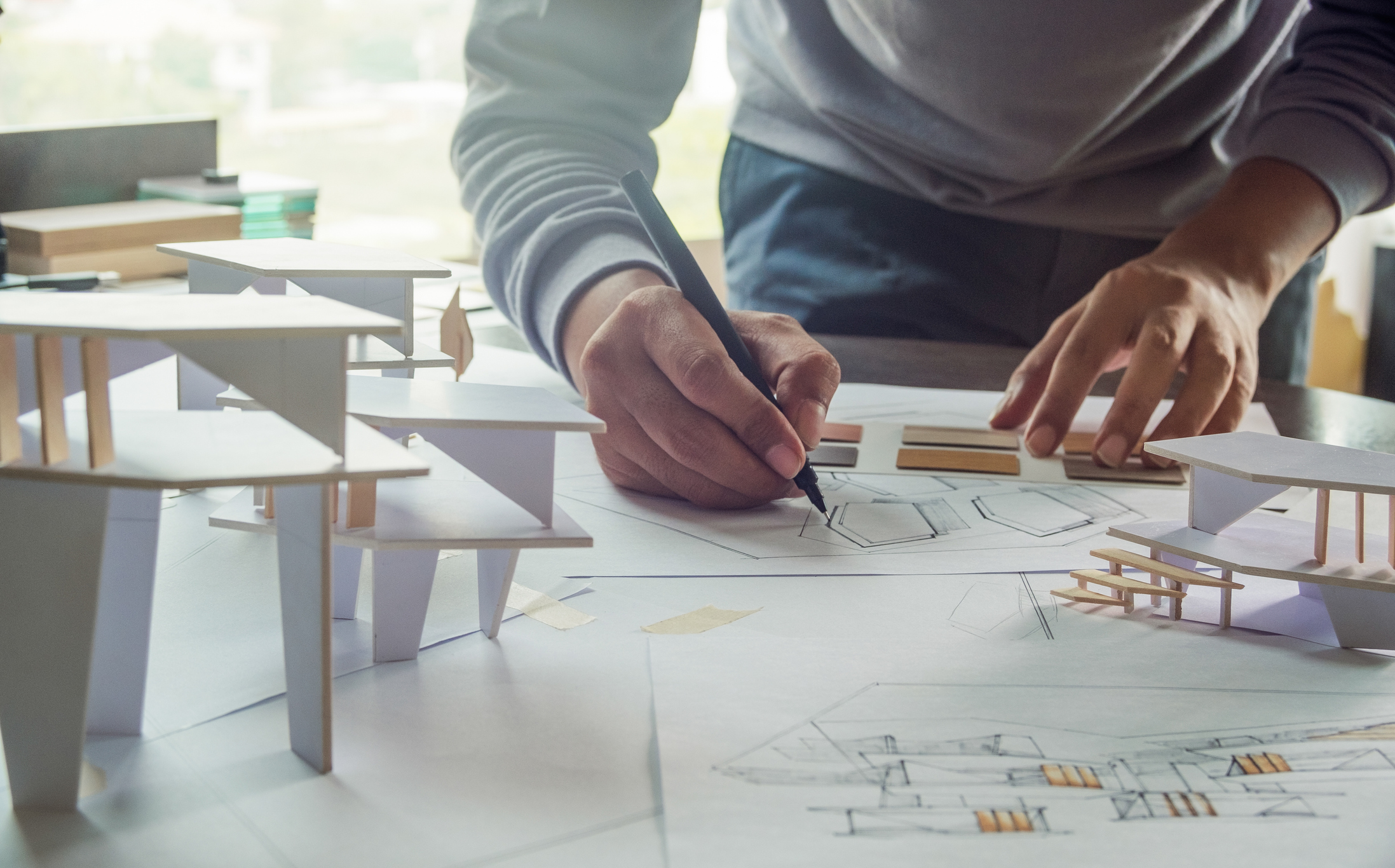Architect Hiring Guide for Homeowners and Developers
Architect Hiring Guide for Homeowners and Developers
Blog Article
Understanding the Diverse Career Paths Available for Aspiring Architect
As an ambitious Architect, you have a globe of occupation paths waiting for you. Whether you're attracted to typical design or the nuances of lasting style, there's a niche that aligns with your rate of interests.
Traditional Design: Designing Buildings and Frameworks
Standard style concentrates on making buildings and frameworks that blend performance with visual allure. Your layouts can show cultural heritage, showcasing local traditions while meeting modern needs.
You'll develop abilities in composing, model-making, and website evaluation, enabling you to envision and communicate your ideas effectively. Involving with customers, you'll require to recognize their vision and equate it into possible layouts.
Furthermore, building codes and sustainability practices are crucial in your work, guaranteeing your structures are secure and environmentally friendly. As you expand in your profession, you'll discover chances in residential, commercial, or even restoration tasks, each offering unique difficulties. Welcoming traditional style paves the method for a satisfying profession that pays homage to the past while shaping the future.
Urban Planning: Shaping Areas and Public Spaces
As an ambitious Architect, you can play a crucial role as a metropolitan coordinator, transforming how neighborhoods work and engage. By utilizing neighborhood involvement techniques, you'll ensure that citizens have a voice fit their atmosphere. Plus, integrating sustainable style concepts will certainly assist produce areas that not just meet today's needs but likewise shield the future.
Function of Urban Planners
While numerous might think about architects as the single dreamers behind buildings, metropolitan organizers play an important role fit the wider landscape of communities and public spaces. They assess land usage, zoning legislations, and area needs to produce sustainable atmospheres that boost lifestyle. By teaming up with numerous stakeholders, you'll help design parks, transportation systems, and domestic locations that advertise social communication and access. Urban planners additionally concentrate on environmental factors to consider, guaranteeing that advancements incorporate green rooms and support biodiversity. Your proficiency in spatial style and neighborhood dynamics permits you to picture future development while preserving social heritage. In this important duty, you'll straight influence how people experience their surroundings, making every task a chance for positive adjustment.
Neighborhood Engagement Techniques
Reliable neighborhood interaction strategies are vital for city planners to guarantee that the voices of citizens are heard and valued in the preparation process. To cultivate purposeful discussion, you must prioritize open forums and workshops where neighborhood members can reveal their concepts and issues. Usage surveys and social media sites to reach a more comprehensive target market, making certain varied perspectives are consisted of. Teaming up with local companies can enhance trust and promote deeper connections. It is necessary to supply clear information concerning suggested projects and decision-making processes, enabling homeowners to really feel enlightened and equipped. By actively listening and including comments, you'll develop rooms that mirror the neighborhood's requirements, eventually bring about even more sustainable and successful metropolitan settings. Accept transparency and continuous discussion for lasting influence.
Sustainable Design Principles
When designing metropolitan rooms, integrating lasting style principles is vital for developing environments that thrive both ecologically and socially. You need to begin by concentrating on power efficiency, using products that lower waste and promote recycling. Consider integrating green rooms, like parks and yards, to boost biodiversity and boost air quality. Advertising walkability and public transportation can reduce reliance on automobiles, fostering a healthier area.
Designing with water conservation in mind is likewise essential-- think of rain gardens and absorptive surfaces to take care of stormwater. Entailing area members throughout the planning process warranties that the spaces you produce satisfy their demands and motivate social interaction. By welcoming these principles, you'll contribute to vibrant, sustainable metropolitan landscapes that benefit every person.

Landscape Architecture: Producing Lasting Outdoor Atmospheres
As you discover landscape architecture, you'll uncover vital style concepts that create lovely and functional exterior areas. Lasting practices play an important function in ensuring these settings prosper while minimizing ecological effect. Plus, you'll find a selection of career possibilities that enable you to make a real distinction in exactly how people interact with nature.
Layout Concepts in Landscape
Comprehending style concepts in landscape architecture is necessary for developing lasting outdoor environments that balance with nature. You'll require to contemplate components like scale, equilibrium, and proportion to ensure your designs feel cohesive and welcoming. Integrating indigenous plants not only enhances biodiversity but also minimizes water usage, making your landscape resilient. Consider the flow of space and just how people communicate with it; paths and seating locations must invite exploration and leisure. Furthermore, pay focus to seasonal adjustments, making with products that enhance the environments year-round (Architect). By prioritizing sustainability and aesthetic appeals, you can develop outdoor spaces that enhance the neighborhood and advertise health. Embracing these concepts will certainly set a strong structure for your career in landscape architecture.
Sustainable Practices Summary
Lasting methods in landscape design not only concentrate on appearances yet also prioritize ecological health and source preservation. By incorporating indigenous plants, you improve biodiversity and lower the requirement for chemical plant foods and pesticides. Applying effective irrigation systems helps conserve water and reduces overflow, protecting close-by communities. You can design rooms that promote soil health, such as using natural products and exercising permaculture principles. Additionally, incorporating eco-friendly framework, like rainfall gardens and permeable pavements, aids in stormwater management and lowers urban warmth. You add to a healthier world and provide areas that foster community connection when you develop exterior settings with sustainability in mind. Inevitably, these techniques assure your designs profit both people and the environment for years to find.
Occupation Opportunities Exploration
With a strong structure in lasting methods, landscape architecture uses a selection of job paths that enable you to make a purposeful influence on the setting. You could work as a landscape designer, developing aesthetically pleasing and useful outdoor spaces, or specialize in ecological remediation, aiding to revitalize damaged ecological communities. Urban organizers often collaborate with landscape architects to develop green spaces in metropolitan settings, enhancing city livability. If you're passionate regarding education and learning, think about coming to be a landscape architecture teacher, motivating future generations. Furthermore, you could collaborate with nonprofits focused on environmental sustainability or involve in study to innovate brand-new practices. Each path not only forms lovely atmospheres yet additionally cultivates a much healthier world for future generations.
Lasting Style: Concentrating on Eco-Friendly Practices
As you discover your occupation in architecture, embracing environment-friendly techniques can set you apart in a competitive field. Sustainable design concentrates on developing buildings that decrease ecological impact while boosting resident health. By integrating renewable products, energy-efficient systems, and lasting structure methods, you'll add to a greener future.
Begin by acquiring expertise of eco-friendly qualifications like LEED or BREEAM, which can strengthen your qualifications. Think about exactly how natural light, ventilation, and thermal efficiency can maximize layout. Work together with engineers and environmental consultants to introduce solutions that lower waste and conserve resources.
Do not forget the relevance of community participation-- engaging neighborhood stakeholders can influence designs that integrate with the environment. As customers significantly prioritize sustainability, your competence in environment-friendly techniques will not just draw in tasks yet likewise meet your interest for responsible architecture. Welcome this crucial element of the career, and enjoy your occupation flourish.
Historical Conservation: Protecting and Restoring Cultural Heritage
While you commence on your architectural journey, consider the vital role of historic conservation in preserving our social heritage. This field focuses on the protection and restoration of substantial structures, sites, and frameworks that tell the stories of our past. By involving in historical preservation, you'll assist secure the architectural legacy that forms area identification.
As a historic preservation Architect, you'll evaluate historic relevance and analyze the problem wikipedia reference of frameworks. You'll function very closely with conservationists and chroniclers to ensure genuine reconstruction techniques are utilized. This occupation path permits you to mix creative thinking with research study, enabling you site to develop options that appreciate initial products and craftsmanship.
Your work not only adds to sustainability by recycling existing buildings yet also fosters a sense of pride within neighborhoods. Welcoming this path will assist you become a guardian of history, protecting the stories and aesthetic appeals that enhance our lives.
Inside Style: Enhancing Indoor Spaces
Historic preservation and indoor architecture both share a commitment to improving the developed setting, but they focus on different elements. While historical preservation emphasizes keeping a framework's cultural and historical value, interior style zeroes in on optimizing interior areas for functionality and looks.
As an ambitious Architect, you'll discover that interior style permits you to blend creative thinking with technical skills. You'll make spaces that not just look excellent but likewise promote comfort and effectiveness. This area entails understanding how light, color, and products interact within an area, impacting mood and functionality.
You'll work on various jobs, from residential homes to business offices, guaranteeing that each atmosphere fulfills the requirements of its owners. By focusing on individual experience, you can transform interiors right into useful and motivating spaces, making a substantial effect on how individuals interact with their environments. Welcome the possibility to enhance indoor settings and form the method individuals live and function.
Industrial Style: Combining Functionality With Aesthetic Appeals
Commercial style plays an important role in developing products that perfectly blend aesthetics with capability, making sure that what you make use of daily is not only aesthetically appealing however additionally useful. As a hopeful Architect, you could immerse yourself in this field, concentrating on designing every little thing from furniture to customer electronics. Your job includes comprehending customer demands, products, and producing procedures, allowing you to produce innovative options that improve day-to-day experiences.
In commercial style, you'll commonly team up with makers, designers, and marketing professionals, guaranteeing that your designs are not just lovely but additionally possible. You'll find out to balance type and function, prioritizing usability without giving up style. By sharpening your skills in mapping out, 3D modeling, and prototyping, you'll be well-equipped to bring your ideas to life. This career course offers a dynamic atmosphere where creative thinking meets functionality, making it a gratifying choice for engineers curious about shaping the items of tomorrow.
Frequently Asked Questions
What Educational Credentials Do I Need to Come To Be a Designer?
To come to be an architect, you'll require a professional level in design, commonly a Bachelor's or Master's. In addition, you'll need to complete a teaching fellowship and pass the Architect Enrollment Examination to practice legitimately.
Exist Qualification Needs for Various Architectural Career Paths?
Yes, there're accreditation demands for various building paths. Architect. You'll need to pass exams, full internships, and in some cases go after specialized training, relying on your chosen focus, like landscape architecture, metropolitan style, or historical preservation
What Software Skills Are Important for Engineers Today?

Just How Can I Gain Practical Experience While Studying Architecture?
You can obtain sensible experience by interning at building firms, taking part in style competitors, offering for area projects, or working together with schoolmates on real-world tasks. These opportunities enhance your abilities and build important connections in the market.
What Work Opportunities Exist Outdoors Standard Design Firms?
You can explore various job possibilities outside conventional design companies, like urban planning, interior style, landscape design, construction administration, property development, or perhaps roles in sustainability consulting. Each offers special image source obstacles and rewards.
Whether you're drawn to traditional design or the subtleties of lasting layout, there's a specific niche that lines up with your rate of interests.When making urban rooms, incorporating lasting layout principles is vital for creating atmospheres that flourish both ecologically and socially.As you discover landscape style, you'll uncover important style concepts that create useful and gorgeous outdoor rooms.Comprehending style concepts in landscape design is necessary for developing lasting outside atmospheres that integrate with nature.In industrial design, you'll often collaborate with online marketers, manufacturers, and designers, guaranteeing that your designs are not just lovely but also possible.
Report this page